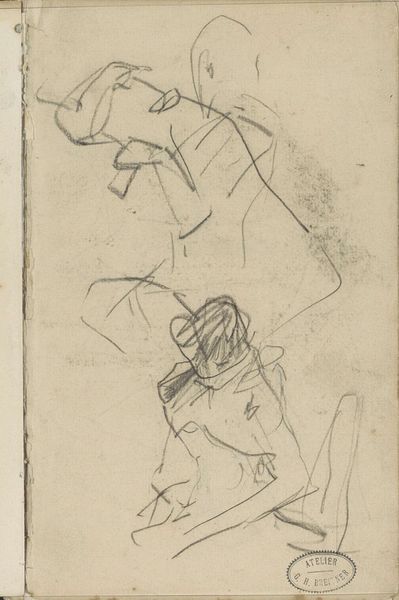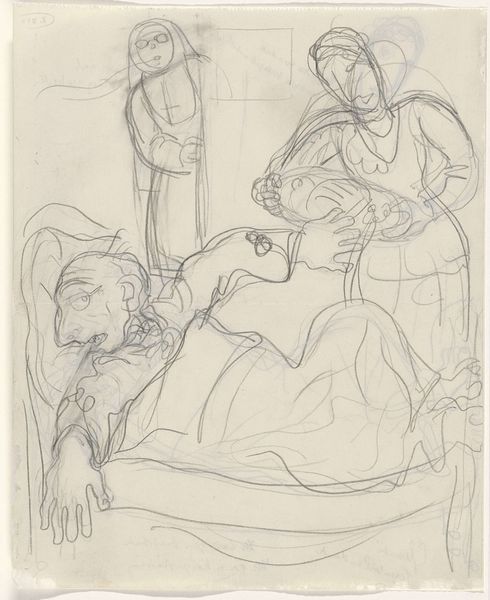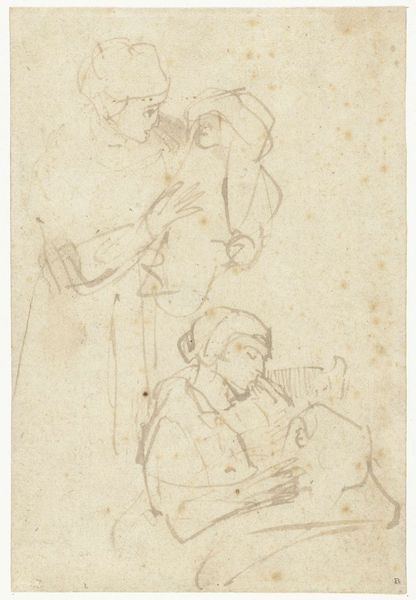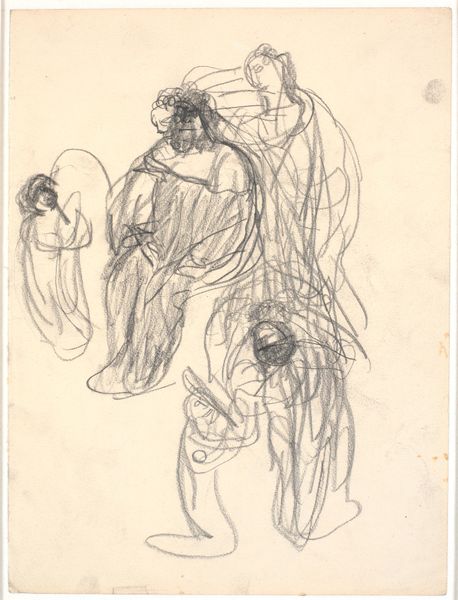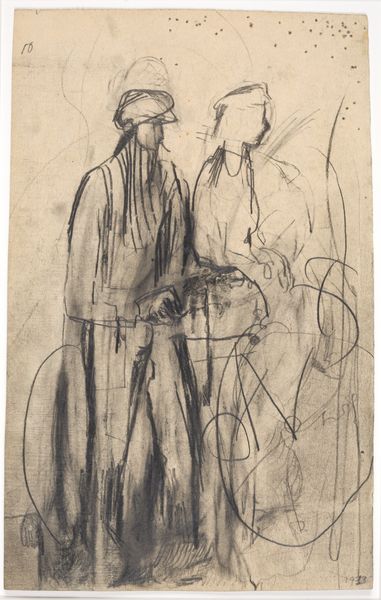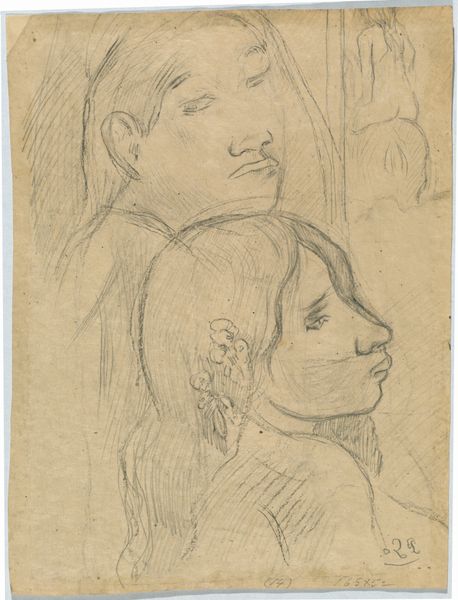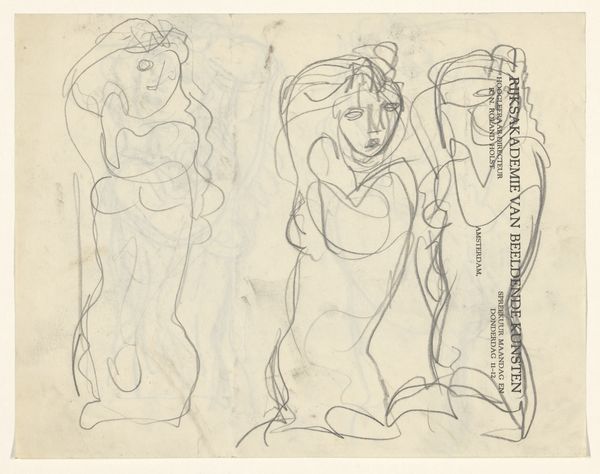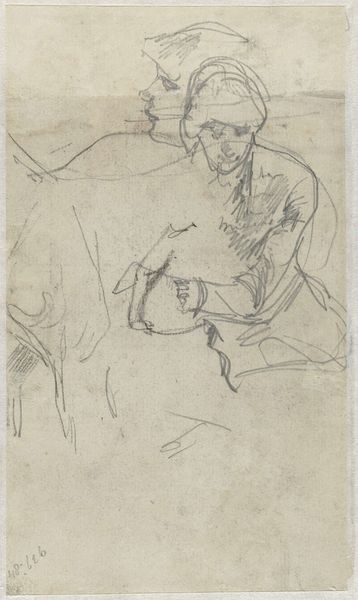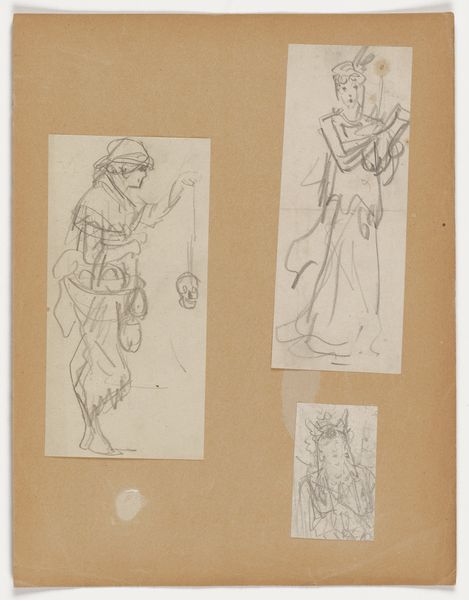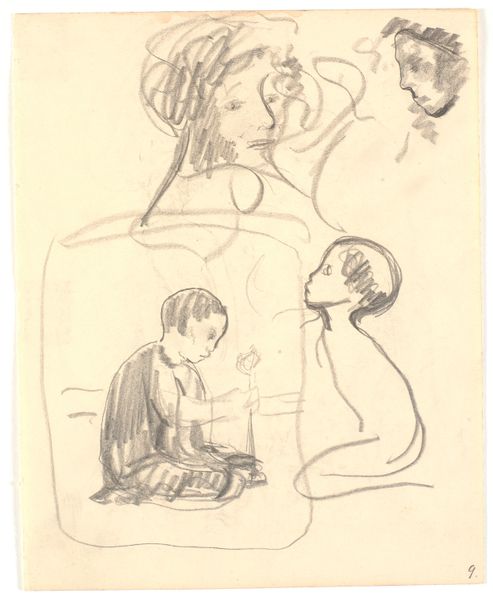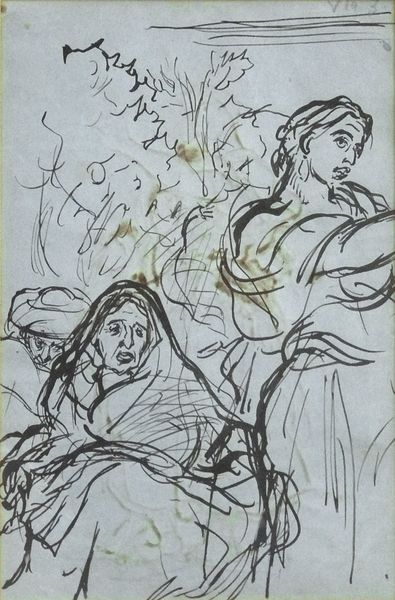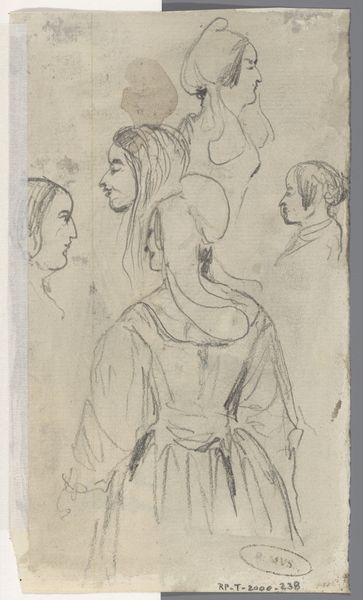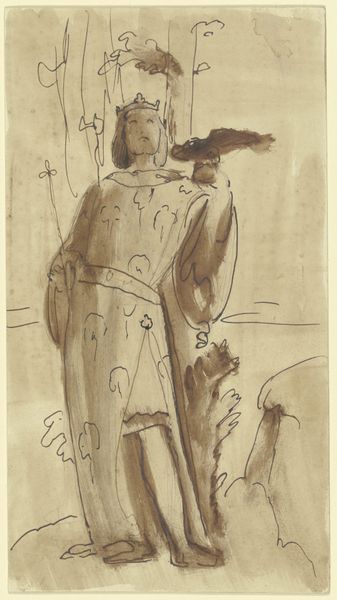
An Equestrian Figure and Other Studies (recto); A Sleeping Girl and Man in Medieval Costume (verso) 1830 - 1844
0:00
0:00
drawing, pencil
#
portrait
#
drawing
#
figuration
#
romanticism
#
pencil
Dimensions: Sheet: 14 7/8 × 9 3/8 in. (37.8 × 23.8 cm) Mount: 18 5/8 × 13 3/8 in. (47.3 × 34 cm)
Copyright: Public Domain
Editor: This is "An Equestrian Figure and Other Studies (recto); A Sleeping Girl and Man in Medieval Costume (verso)", a pencil drawing made sometime between 1830 and 1844 by Theodor Richard Edward von Holst. It feels very intimate, almost like a glimpse into the artist's sketchbook. What strikes you most about this piece? Curator: What immediately captures my attention is the material process. Here, von Holst uses readily available pencil, a medium often relegated to sketches, and elevates it to a study of figures and costume. It forces us to question the perceived hierarchy of art materials and techniques during the Romantic period, particularly regarding the value of “finished” works versus preparatory drawings. Editor: So, you’re saying that the choice of pencil challenges conventional ideas about what a finished artwork should be? Curator: Precisely. Consider the economic accessibility of pencil compared to, say, oil paints. The democratization of art creation, implied by using cheaper material, is further reinforced by the figure studies themselves – not polished portraits of the elite, but perhaps models, or even imaginative figures based on popular literature. What does the accessibility suggest about the artist's audience? Editor: Maybe it speaks to a rising middle class with a growing interest in art and literature, but limited resources to commission expensive paintings. It allowed artists to reach a wider audience and make art more relatable. Curator: Exactly. By examining the materials, the process, and the potential audience, we gain insight into the socio-economic forces shaping art production in that era. Editor: That’s fascinating. I hadn't considered how the simple act of choosing pencil could open up so many avenues for understanding the art and its historical moment. Thank you! Curator: My pleasure! Remembering that artistic expression always emerges from and interacts with specific social and material conditions enriches our appreciation.
Comments
No comments
Be the first to comment and join the conversation on the ultimate creative platform.
